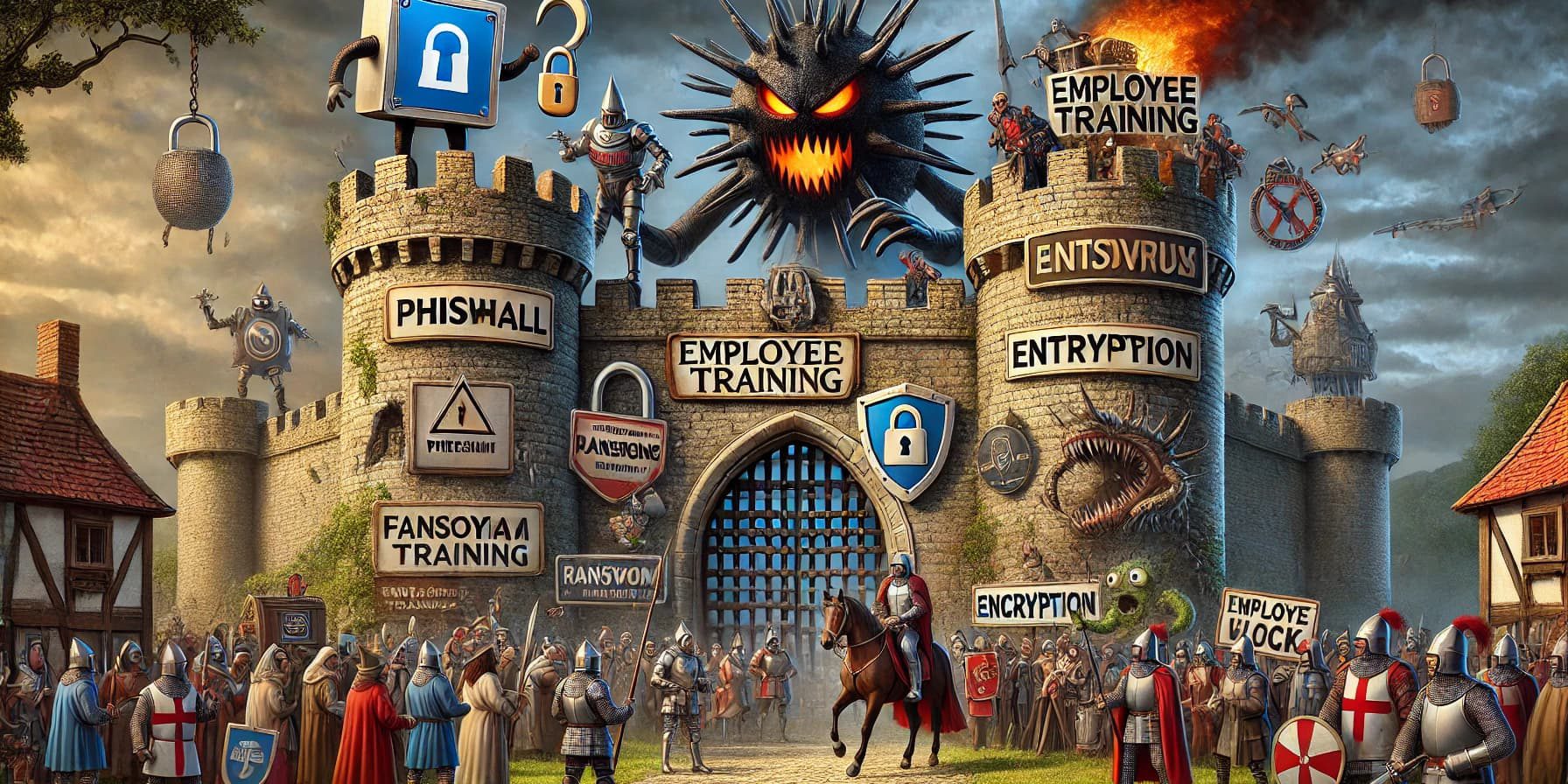In our digital age, every organisation, from small businesses to governments, relies on good practices to protect data, finances, and reputation from cyber attacks. Cyber attacks are increasingly common and can have severe consequences if businesses aren’t prepared. Cybersecurity can protect businesses from serious threats.
What is Cybersecurity?
Cybersecurity encompasses the strategies, tools, and practices that prevent unauthorised access to sensitive systems and data. From protecting email systems to securing customer information, cybersecurity is critical to maintaining business integrity.
What are the common Cyber Threats?
There are several types of cyberattacks:
- Phishing: Deceptive emails or messages designed to trick individuals into sharing sensitive information, such as passwords or credit card numbers. Often involves fake websites that look legitimate but are meant to capture personal data.
- Ransomware: Malicious software that locks users out of their systems or encrypts data, demanding a ransom payment to restore access. Ransomware attacks can be devastating, causing both financial and data loss.
- Data Breaches: Unauthorised access to sensitive data, such as customer information, financial records, or intellectual property. Breaches can lead to identity theft, financial loss, and damage to an organisation’s reputation.
- Distributed Denial of Service (DDoS): Overwhelms a network or website with excessive traffic, causing it to slow down or crash. DDoS attacks disrupt services, making systems unavailable to legitimate users.
- Malware: Broad term for malicious software designed to damage or gain unauthorised access to systems. Includes viruses, worms, and Trojans, which can compromise security and steal data.
- Spyware: Software that secretly monitors user activity and collects data without permission. Often used to capture login credentials, banking information, or browsing habits.
Why are Cybersecurity Tools Crucial?
Security tools prevent and respond to cyber threats in real-time. Without them, organisations risk losing customer data, intellectual property, and financial assets. Tools like firewalls, antivirus software, and encryption play a central role in protecting systems.
Types of Security Tools
- Firewalls: Act as a barrier between your internal network and external threats by controlling incoming and outgoing traffic.
Cisco ASA (Adaptive Security Appliance) is one of the most widely used firewalls. It provides advanced threat defence, integrating firewall functions with VPN capabilities to protect internal networks from external threats. - Antivirus Software: Detects and removes malicious software, like viruses and malware, before they cause harm.
McAfee Total Protection is a comprehensive antivirus solution that protects against viruses, malware, ransomware, and other cyber threats. - Encryption: Protects sensitive data by converting it into unreadable code that only authorised parties can access.
BitLocker is a widely used encryption tool by Microsoft. It provides full disk encryption for Windows devices, protecting sensitive data by encrypting the entire drive. - Intrusion Detection Systems (IDS): Monitors network traffic for suspicious activity.
IBM QRadar monitors network traffic, detects suspicious behaviour, and provides real-time alerts on potential security breaches. - Two-Factor Authentication (2FA)
2FA adds an extra layer of security by requiring users to provide two forms of identification—typically a password and a unique code sent to a phone or generated by an authentication app. While 2FA is essential, it’s important to move away from less secure methods like SMS-based verification, as these can be intercepted.
Authy generates time-based one-time passwords (TOTP) on your phone or other devices, providing a more robust level of security that is not reliant on SMS, which can be vulnerable to phishing attacks or SIM swapping - Employee Training and Awareness
Even with the best tools, human error can still lead to security breaches. Continuous staff training on recognizing phishing attempts, following strong password policies, and using security protocols is vital to maintaining a strong cybersecurity posture.
Cybersecurity is essential for protecting any business from costly cyber threats. By using the right tools and providing ongoing employee training, companies can strengthen their defences and reduce the risk of breaches.






